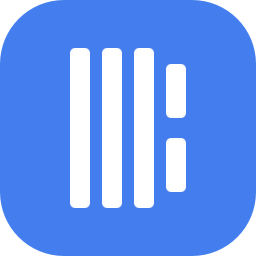Original author: Luccy, BlockBeats
Original editor: Jack, BlockBeats
Just last week, when Blast users exceeded 100,000 and TVL exceeded 1.3 billion US dollars, the Blast test network was officially launched and the BIG BANG competition was simultaneously launched. The Blast ecosystem has also attracted a large number of encryption enthusiasts, including many developers. .
Among the contenders, EVM security engineer @0x Kaden discovered an issue with Blasts codebase. February 1, @0x Kaden on social media platformsTweetSays Blast changed Optimisms MIT license to BSL.
As soon as the news came out, gaslite co-founder @PopPunkOnChain immediately compared the code bases of Blast and Optimism. It can be seen that in the original Optimism code base, the first line is //SPDX-License-Identifier:MIT, and in the Blast submission interface, MIT is changed to BSL.
Not only is the license modified, in line 23, the base fee code space is removed and changed to basefee. @PopPunkOnChainexpress, Blast intends to fork Optimisms code, add spelling errors, remove functions, and even teased that this doesnt cost a lot of money for Blast.

It was supposed to be an event to attract developers to build the Blast ecosystem. Just half a month after the event, the code was found to be plagiarized, and the community started to mocker Blast with memes. Among these memes, the most worthy of mention is Blasts modified BSL license.

The MIT License (Massachusetts Institute of Technology License) and the BSL License (Business Source License) are software licenses that stipulate the conditions for the use and distribution of software. Among them, the MIT license is more open and is a permissive open source license that allows free use, modification, distribution and merging of code in commercial and non-commercial projects. The BSL license is a relatively new license that allows free use of software, but may impose some restrictions on commercial use.
Ethereum OG adds insult to injury
Blast Changing Optimisms MIT code to BSL means that commercial users may need to pay licensing fees or comply with other commercial use restrictions after a certain point.
Although the original intention of BSL is to find a balance between the open source spirit and commercial needs, and its original intention is recognized by most people; however, compared with other looser licenses (such as MIT), BSL is obviously too strict and has been criticized for its existence. Problems such as hindering innovation and not open source enough.
The most important thing is that the open source nature of the MIN license does mean modify at will to a certain extent, but modifying it directly to BSL is like a joke If you cant solve the problem, solve the person who raised the problem. It is quite There is a feeling of cheating. In response to this, Scroll developer @0x G 00 gly also asked, The MIT license does not mean that you can use it to do what you want, so just delete it?
Scroll developer @pseudotheos also explained, In fact, removing the license is the only thing MIT is not allowed to do. Even Bankless general partner @TrustlessState expressed his exclamation with a brief yikes.

Not just Scroll and Bankless, we can see multiple project developers on this matter.
Including Mocaverse consultant @waleswoosh, MemeLand builder @0x Char, Waterfall protocol leader @Sabnock 66, security company Spearbit senior engineer @real_philogy, wartime capital partner @rockyxbt, and Shadow engineer @BeckerrJon, among others. Although they did not express their position clearly, just one or two simple words or a meme picture, it can be seen that they are opposed to Blasts move.
Among them, EthernautDAO builder @m 4 rio_eth also said, The code is a bit complicated and has some custom functions, which is why I think they made a license.
BSL has been controversial in the encryption circle for a long time
In fact, the community has been resentful about BSL for a long time. Some people even interpret BSL as BullShit License.
Previously, the V4 version of dYdX initiated the transition from the Ethereum layer 2 network to an independent blockchain on Cosmos, which was generally recognized by the community. Because its founder Antonio Juliano made it clear on social media: dYdX V4 will be completely open source and will not contain any commercial copyright license. Anyone can freely use the corresponding code as needed.
On the other side, the V4 version is also launched. Uniswaps V4 has aroused opposition from many community members because it announced the continuation of the V3 version and the implementation of BSL.
In an exclusive interview with 1inch co-founder Anton Bukov conducted by BlockBeats, we learned that Anton believes that “the MIT license allows anyone to do anything with the code we write” while “the commercial license may prevent some public teams or fair competitors from doing anything.” Bifurcation.
Related Reading:Exclusive interview with 1inch: How to innovate in the DEX field under the shadow of Uniswap’s monopoly?》
Additionally, BSL is rarely liked in the crypto community. Because when choosing a license, developers usually weigh the advantages and disadvantages of different licenses based on the needs and development goals of the project. @stonecoldpat 0, a member of the venture capital company Lemniscap, once conducted an informal poll on this. According to community voting, 76% of people are willing to choose the MIT license.

In the comments of this poll, OP Labs researcher @kelvinfichter made clear the use of open source codeexpress, which license to choose is not even a question, You will never get a commercial source code license on the Optimism repository.

@kelvinfichter believes that the Ethereum ecosystem should be free and open to allow for competition and innovation every step of the way. But commercial source licenses are defensive and non-collaborative. It is inconsistent with Ethereum’s values. I think this is a mentality. I dont care how many people want to defend their private business interests. Ethereum is about creating abundance through cooperation. Optimism will always be free and open source software.
Why is the time to build an L2 getting shorter and shorter?
Judging from the plagiarism and license changes, it can be seen that L2, represented by Blast, is running wildly on the road of involution. Looking at the entire L2 development trend, established public chains have spent a lot of time building their own technology stacks and communities, while new public chains are springing up like mushrooms and are directly stealing them.
The initial development of L2 was very difficult. Among the first batch of mainstream L2s, Optimism hoped that launching Layer 2 would be as easy as deploying smart contracts to Ethereum today.
Therefore, Optimism created OP Stack, which is an infrastructure that can be forked and modularized to expand the blockchain. It can integrate various Layer 2 into a single superchain (Superchain) and integrate the originally isolated Layer 2 into a powerful chain. In the system of interoperability and composability, it leads the one-click chain narrative. In essence, Hyperchain is a horizontally scalable blockchain network that shares Ethereums security, communication layer, and development kit with each chain.
Related Reading:Crazy multi-chain universe, crazy OP Stack》
After OP Stack, other mainstream L2s such as Arbitrum, zkSync, Starknet, and Polygon have also launched Stack stack solutions in an attempt to open source core components and promote RaaS solutions. Arbitrum Orbit has also seen another wave of RaaS wars, and modular development has further intensified. Increased the pressure on the veteran L2.
It can be seen that although the visions of these L2s are different, their cores are customization and application-specific chains, allowing the technological development of the encryption industry to upgrade and iterate from one-click currency issuance to one-click chain issuance. The ultimate goal is to seize the strategic high ground of Layer 2 and even Layer 3. Interestingly, the efforts of these seniors actually benefited the younger generation. The construction of new chains has not only lowered the entry threshold technically, but has even been scrambled for. However, the old people can only continue to PUA themselves and continue to develop silently with the attitude of getting one is one.
For new chains, if one-click chaining is developed by standing on the shoulders of giants, then directly raiding or even modifying the license like Blast can be said to be a stab to the predecessors.
Although Blast and Optimism are members of the op rollup track, this does not mean that they can directly copy or delete Optimisms code. Each rollup should have its own unique code base. The plagiarism of the new chain is obviously not a new phenomenon. Sun Yuchen and Vitalik Buterin once had a heated discussion on the issue of plagiarism of the public chain code.
Blast gave L2 a heavy blow when it was first born and achieved both fame and fortune in a very short period of time. Now it is not surprising that code plagiarism has been revealed and many developers have been sighed. In the face of this turmoil, Blast has not yet made an official statement, and BlockBeats will continue to track the progress of the incident.



